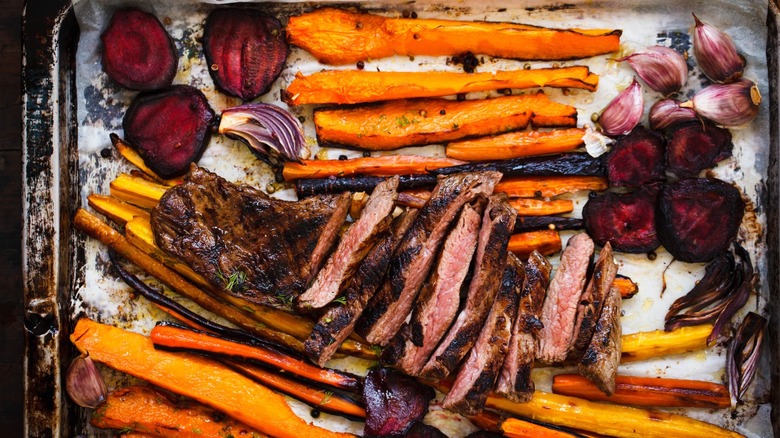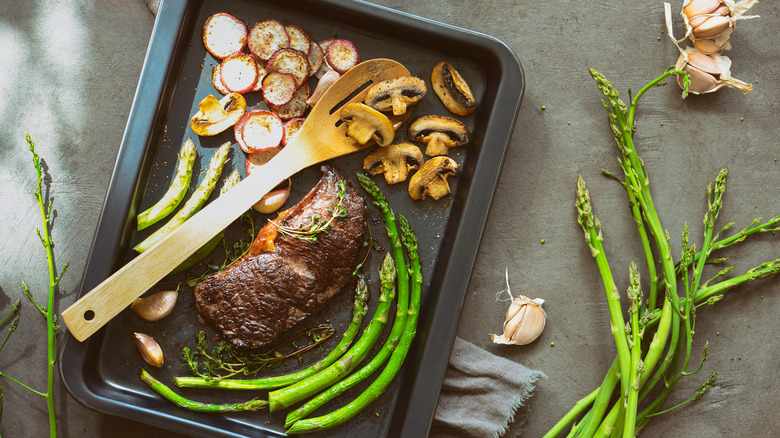How To Make Steak The Star Of Your Next Sheet Pan Dinner
Sheet pan meals are some of the easiest and tastiest ways to minimize the number of pans you use to whip up dinner. Essentially, you can put all of your meal components — including the protein, starch, and veggies — all on the same pan, slide them into the oven, and then take them out and have everything ready to eat at the same time. While many folks opt for salmon or chicken as their protein of choice, you should really try making steak sheet pan dinners, too.
Steak pairs well with an array of different sheet pan additions and can cook relatively quickly. You'll want to select the right cut of steak, of course; sirloin is a great option for your sheet pan because it cooks quickly and can be kept super flavorful and tender, so long as you slice the steak against the grain. Or, you can grab a New York strip steak instead. This cut is super juicy and also pairs well with an array of starches and flavorful veggies.
Steak and sides come together in the pan
The key to making an effective sheet pan dinner is timing out how long it will take each element to cook. For example, if you select baby potatoes for your sheet pan, you'll need to slide them into the oven first, so they're ready to go when you add the steak or veggies. Otherwise, you could end up with an overcooked steak — or raw spuds. Steaks and light, non-starchy veggies can generally be broiled for about the same time, but if you notice your veggies are burning, you can cover them with foil to protect them.
You'll also need to consider rest times for your components. Steaks need to be rested and cooled to between 120 and 125 degrees Fahrenheit before you can slice into them. Otherwise, the juices will drain out and all of your hard work will be in vain.
Your options for sides are seemingly endless, but if you're in need of inspiration, think of some of the vegetables you commonly see served with steak at a steakhouse. Asparagus is a great selection for your sheet pan dinner because it's robust and will hold its shape after it's cooked. You could also opt for green beans, or chopped summer squash and zucchini to give your meal a distinctive summery flair. Just be sure to coat your veggies liberally with oil to prevent them from sticking and burning, and match the seasonings on your steak (or in your marinade) to the ones on your vegetables for a harmonious bite.

